Explore the Village of Puerto Lopez
Located in the Manabi Province, along the central coast of Ecuador, Puerto Lopez is a small coastal village that’s famous for its myriad of tourist attractions, including humpback whale watching, the scenic Machalilla National Park, and so much more.
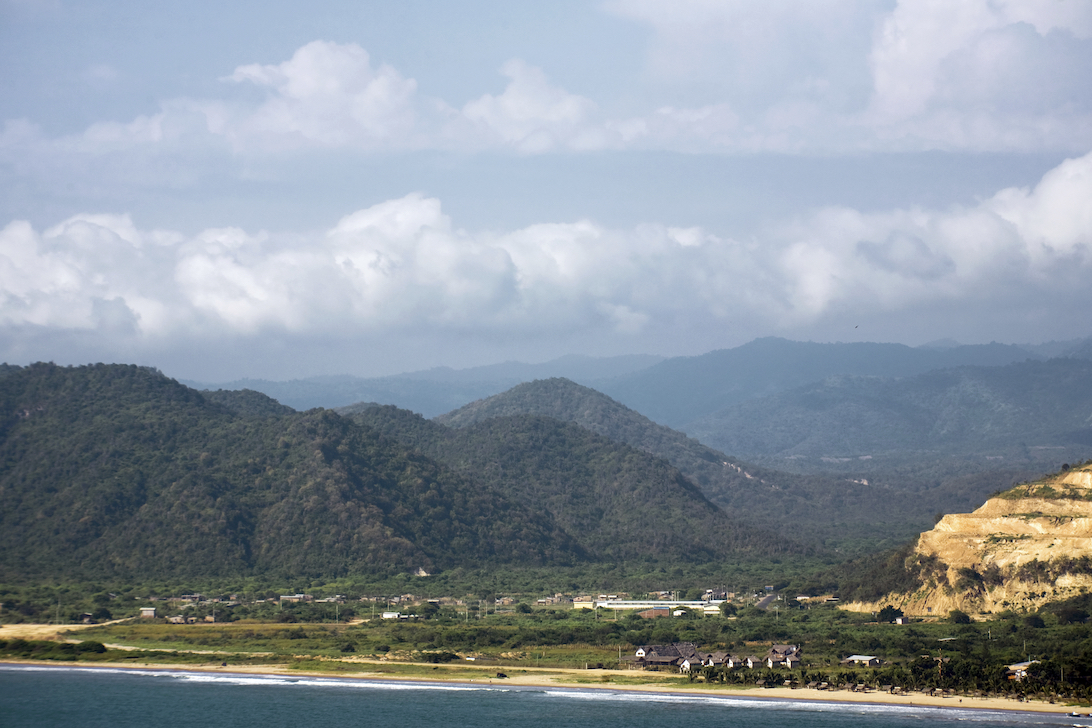
One of the best things about Puerto Lopez is its simplicity – the village boasts a very laid-back charm, as it lacks the bustling venues and high-rise buildings found in other coastal villages. Outdoor lovers in particular, will be able to find a wide variety of stunning destinations, including beaches, reefs, hiking trails and forests.
The unique coastal town truly has something for everyone, so it can be challenging for visitors or new residents to figure out what to see or do first. LiveTheLife has prepared a list of some of the best attractions and activities you can experience in Puerto Lopez:
Humpback whale watching

Humpback whale watching is one of the main reasons why Puerto Lopez is a big tourist attraction. The best time to see these majestic giants is during the months of June to September, as this when they usually stop along the coast of Puerto Lopez.
Puerto Lopez has several licensed tour agencies that offer whale watching tours – you can find many of these offices in the town’s beach area as well as in the plaza. Tours typically last around 30 to 45 minutes and can cost about $15 to $20, depending on the season.
If you’re interested in going on a whale watching trip, LIVETHELIFE can book a guided tour for you!
Isla de la Plata
Avid birdwatchers will enjoy visiting Isla de la Plata, as the island is teeming with a wide variety of unique bird species, including Nazca boobies, frigatebirds, tropicbirds, Peruvian pelicans, waved albatrosses, and more. You can see some of these marvelous creatures while walking along Isla de Plata’s many established nature trails. You’ll be able to find tour companies that offer complete tour packages that include whale watching, guided treks, and snorkeling.
Trips from Puerto Lopez to Isla de la Plata typically cost around $30 to $45, depending on the time of the year.
Los Frailes Beach Park
Located around 10 kilometers from Puerto Lopez, Los Frailes Beach Park is a beautiful beach with spectacular ocean views and rock formations. The Los Frailes beach is the largest of three beaches included within the National Park of Machalilla.
Outdoor lovers can take an unforgettable two-hour long hike that will take you to the black sand beach of Playa Negrita, La Tortuguita beach, a lookout point surrounded by spectacular views, and finally to Los Frailes.
Dining

Foodies can choose from a huge selection of top-notch dining venues in Puerto Lopez. Many of the restaurants offer traditional Ecuadorian cuisine which you shouldn’t miss, such as ceviche, pastel de banano, corviche, and many others.
One dish you should definitely try when in Puerto Lopez however is encebollado, a delicious fish stew that’s made with yuca and served with crushed fried plantain chips. The dish is very popular in the Manabi Province, and is usually offered as a breakfast meal in either street carts or restaurants.
If you’re looking for another great place to visit in Ecuador, check out our guide to Yunguilla Valley.
Must-try Restaurants in Puerto Lopez
Dining is an absolute treat when you’re in Puerto Lopez. At this coastal town, foodies will be able to indulge in a terrific mix of great-tasting dishes, all of which are guaranteed to satisfy your taste buds.
Restaurants in Puerto Lopez come in all shapes and sizes, from cozy cafés to lovely seaside bistros and more. While Ecuadorian specialties such as ceviche, encebollado, and pastel banana are definitely the highlights, different types of cuisine from all over the world such as Italian, Mediterranean, French, and more are also available.
If you’re looking for some of the best Puerto Lopez restaurants, here’s a list of places you should visit:
Moby Dick Restaurante
Malecón Julio Izurieta (near Alejo Lascano corner)
Puerto López, Manabí
(+593) 98 700 7326
RestauranteMobyDick.com
If you’re craving for some of the finest, freshest seafood in Puerto Lopez, you can’t go wrong with Moby Dick Restaurante. Their grilled fish is highly recommended, with its melt-in-your-mouth lightness and flavorful herbs.
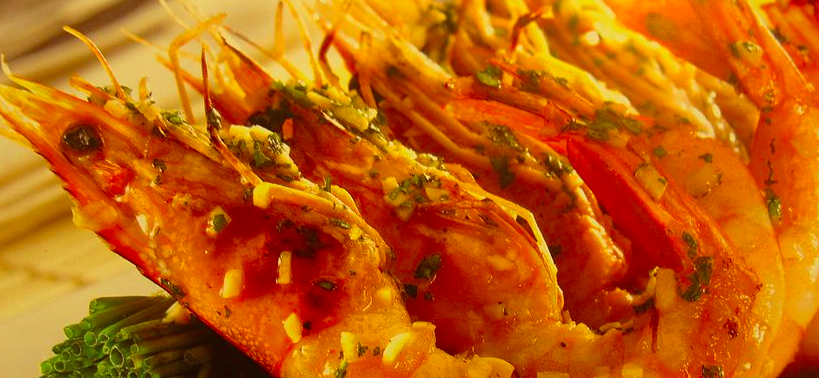
Photo courtesy of https://www.restaurantemobydick.com/galeria
The restaurant offers a great view of the ocean, which is enhanced by its quirky nautical motif, creating a relaxing ambiance for diners.
Bell Italia Restaurant
1 block off Malecon, between Abdon Calderon and
Maria Immaculada Concepcion, Puerto Lopez
(+593) 99 617 5183
Bell Italia may be located a few minutes away from the city center, but is definitely worth a visit if you’re in Puerto Lopez. The venue boasts a welcoming and romantic ambiance, which diners can enjoy along with top-quality homemade Italian dishes.
Bell Italia serves a wide selection of pastas and lasagnas. One of their standout menu items is their homemade pasta topped with salmon and prawns – a delightful dish that is sure to tickle your taste buds.
If you’re looking for a place where you can enjoy a hearty Italian meal while taking in beautiful surroundings, Bell Italia is for you.
Paella Mar
Malecon, beside Hotel Pacifico, Puerto Lopez
(+593) 99 219 90 914
Paella Mar is a Spanish restaurant and wine bar that serves a delightful mix of Spanish-style seafood, Mediterranean cuisine, and vegan options. Their dishes are made from scratch with fresh ingredients, so it might take some time to prepare, but everything’s worth it.
As their name implies, their specialty is paella – and boy, are they heavenly! They’re served in generous proportions, and come in several variations. The best one is definitely the lobster paella, which is truly a phenomenal dish.
In addition to their great tasting paellas, Paella Mar also features a good selection of wines, which guests can enjoy along with scenic views of the ocean.
Etnias Cafe
Calle General Cordova (next to the fire station), Puerto Lopez
(+593) 99 167 6876
Located close to the beach, Etnias Café is a cozy coffee shop that is owned and managed by a French couple. The place is designed with coffee lovers in mind, with its authentic espresso and great tasting cappuccino.
Their beverages go along perfectly with their top-notch selection of desserts, which include crepes, homemade brownies, waffles, and pies. If you’re looking for a great place that serves coffee and dessert, stop by this wonderful café – you won’t regret it.
A Tour of Cuenca’s Culinary Delights
Cuenca is synonymous with stunning colonial architecture, colorful festivals, and artisanal goods. Food might not be one of the first things that enter your mind when you think of Ecuador’s third largest city, but the local dining scene is fast evolving – and the city’s gastronomic landscape is as fascinating as its storied past.
From fine dining restaurants in hotels to stylish sushi joints, a tour of the city’s culinary delights will leave you hankering for more.
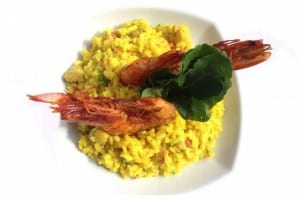
Photo courtesy of http://eljardincuenca.com/en/.
1. El Jardin at Hotel Victoria
Calle Larga y Presidente Borrero
One of Cuenca’s most iconic restaurants, El Jardin serves continental food using only fresh local ingredients. Their numerous offerings include everything from prawns and heart of palm to vegetarian plates and pastas. An attentive staff and a sophisticated interior puts it on par with the world’s top restaurants.
2. Casa Alonso Restaurant at Mansion Alcazar
Calle Bolivar 12-55 y Tarqui
Casa Alonso prides itself on being the only gourmet restaurant in Cuenca, offering Ecuadorian and international cuisine to satisfy both local and foreign diners. As far as menu, presentation, and ambience goes, eating here feels like dining at a fine restaurant in New York, Paris, or London.
3. Tiesto’s
Juan Jaramillo y Mariano Cueva 4-89
Cuencana and traditional fusion cuisine make up Tiesto’s bold menu. Food is prepared and served in traditional clay pots, while hand-decorated dessert dishes add a personal touch to your dining experience. Try the potato soup with avocado garnish, or the flavorful chicken curry.
4. La Quinua
Benigno Malo
Quinoa salad, potatoes Bombay, and gnocchi in tomato sauce are just some of the vegetarian offerings in this restaurant. The colorful interior exudes a warm and welcoming atmosphere that you and your company will surely enjoy.
Gran Colombia 1-89 y Capulies
Vegetarians and meat-eaters alike have professed their love for this Taiwanese restaurant, where the menu revolves around soy and wholesome produce. Hot noodles, chao fan, and spring rolls are served alongside local fare like fried plantains and corn patties.
Highly recommended are their affordable almuerzos, or lunches, that include soup, an entrée, and drinks.
6. NOE
Padre Julio Matovelle 2-25 y Federico Proaño
Hailed as the leading Japanese-Ecuadorian restaurant in the scene, this trendy sushi joint is getting rave reviews left and right. Come here for expertly-cut sushi and sashimi, followed by fried ice cream and lemon cream for dessert. Every dish is a visual treat – the presentation is always exquisite.
Honorato Vasquez 6-24 y Hermano Miguel
Sit down for a lovely meal at the city’s historic center. Moliendo Café offers the best of Colombian cuisine, from hearty arepas to simple but tasty empanadas. Wash it all down with some Colombian coffee and admire the décor, which includes photographs of other cities, different currencies, and wooden dioramas.
8. Mediterraneo
Honorato Vasquez 7-64 y Luis Cordero
If you find yourself longing for authentic Italian cuisine, this restaurant serves steaming plates of pasta, pizza, and risotto in the midst of historic Cuenca. Feast on freshly baked bread, flavorful dipping sauces, and sumptuous mushroom ravioli.
An attentive staff makes for a memorable dining experience, while generous portions will satisfy your craving for excellent food.
Ready to explore Cuenca’s food scene? Feel free toCall us at 239-848-5876 (USA), 098-316-0067 | 097-994-7640 (Ecuador) or send an email to info@livetheliveinecuador.com.
Food and Water in Ecuador
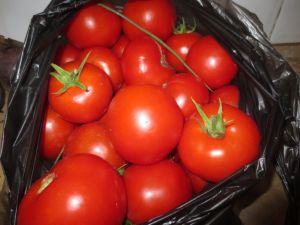
Fresh organic tomatoes in Ecuador
There are many things that make life in Ecuador amazing. One of them is the easy access to fresh and organic produce, and abundant clean water.
Ecuador currently devotes 56,303 hectares of farmland on organic crops like wheat, barley, corn, potatoes, fruit, coffee, and mushrooms, among others. In fact, according to the Research Institute of Organic Agriculture, Ecuador has successfully implemented international standards and regulations on organic farming.
The Biocentro Agroecologico, located just three kilometers south of the historic district of El Centro, is the country’s largest certified organic market.
With Ecuador’s agricultural industry ranging from massive farms and ranches to backyard gardens and cooperatives, anyone has access to fresh and locally sourced produce.
When it comes to water, Ecuador’s more urban areas are equipped with water filtration systems.Tap water is accessible via the public grid in 72 % of the homes, according to a 2010 national census.
The government is also racing to close the gap between urban and rural areas when it comes to providing clean water. A multimillion-dollar project is underway to improve access to drinking water in over 100 municipalities.
But, just as you would take precautions when traveling to any foreign country, tourists and visitors are better off drinking bottled water. While the local tap water may be perfectly safe and potable, it’s always best to err on the side of caution – especially if you have a sensitive constitution or you haven’t developed the immunity locals have over certain pathogens.
Safe water in Ecuador
As with all new destinations, making sure that the water youdrink is safe is fairly easy to do.
Buying bottled water or boiling tap water is a given.
But what else can you do to make sure you remain safe?
Here are a few tips:
- Avoid iced drinks if you can, unless you’re sure the ice is made from purified water.
- Avoid fruit and veg washed in tap water
- For longer-staying visitors, or those wishing to become permanent residents, see a doctor every six months to make sure you’re free of water-borne contaminants
- Have purified drinking water delivered to your home
Eating healthy in Ecuador
It’s easy to get fresh produce like fruit, veg, meat, and dairy products in Ecuador.
Supermarkets and grocery stores are, of course, a primary source of high-quality produce. They are found everywhere and the prices are reasonable.
Locals, however, shop at the local farmer’s market, the best place to spot good deals on fresh finds.
As is true in most places, local markets are often a showcase of the town’s choicest wares and produce. They’re usually sold at a fraction of supermarket prices and come in a wider variety than what’s available in grocery stores. In smaller neighborhoods, the local farmer’s market is just a short walk away.
Buying from farmer’s markets also stimulates the local economy because it cuts the middleman. It also fosters community when locals come out to support their own.
In Ecuador, the sheer variety of local produce is amazing. You’ll find everything from staples like bananas,lettuce, pineapples, tomatoes, and avocados to more unusual fare like soursop, zapallo, and dragon fruit.
In Ecuador, getting healthy is not a problem. In fact, getting healthy has never been this easy or delicious.
Want to know more about Ecuador and the opportunities available to you? If you’re in the US, call 239-848-5876. For all other areas, check out the other numbers you find on this page.
Live the life offers Agrotourism in Ecuador
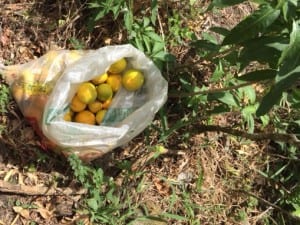 Ecuador is one of the most environmentally diverse countries in the entire world, making it a very desirable location for agriculture. The country’s rich and varied soil combined with the humid tropical climate creates excellent conditions which allow a wide range of tropical fruit, cacao, coffee, and other unique crops to thrive.
Ecuador is one of the most environmentally diverse countries in the entire world, making it a very desirable location for agriculture. The country’s rich and varied soil combined with the humid tropical climate creates excellent conditions which allow a wide range of tropical fruit, cacao, coffee, and other unique crops to thrive.
LIVETHELIFE offers agrotourism travel plans that allow you to experience and discover Ecuador’s rich agriculture. These tours will take you to from the lowland coastal plains to the Andean highlands, allowing you to travel off-grid, stay on a farm, and learn more about Ecuadorian culture like never before.
Here are a few of the locations you’ll get to explore on an agriculture tour:
Guayllabamba Valley
Located around one hour north of Quito, Guayllabamba Valley is known for its abundance of fruit trees that bear fruits such as avocados and chirimoyas. Tourists can also visit the area’s many bromelia plantations and organic farms.
Cotopaxi
Lake Quilotoa and the Zumbahua highlands are fertile areas where crops such as broad beans, barley, and potatoes are cultivated and harvested. In addition to getting a closer look at farm life, tourists can also see the unique native art created by the indigenous communities.
Bolivar
The village of Salinas is popular for producing local products that include chocolate, cheese, dry mushrooms, body oil, and natural essences. Learn first-hand how these products are harvested, all while savoring the town’s panoramic mountain views.
Chimborazo Province
This area gives tourists the chance to see alpacas, llamas, and vicuñas in their natural habitat. Visit the Jambikiwa Foundation and observe how the local community grows and harvests medicinal plants, or tour the many countryside plantations around the city of Riobamba.
—
If you’d like to join an agriculture tour of Ecuador, LIVETTHELIFE will be more than happy to assist you. Get in touch with Torrin Brauch at 239-848-5876 (US) or 097-994-7640 (Ecuador). You can also send him an email at torrin@livethelifeinecuador.com
Organic chocolate production in Ecuador
Ecuador’s organic cocoa, or “cacao” production plays a significant role in the country’s history and economy.
The cacao beans produced in Ecuador are famous throughout the globe for its unique, fine aroma. There’s even a separate category in the cocoa industry for “Arriba cocoa,” the beans grown only in Ecuador.
History of cacao in Ecuador
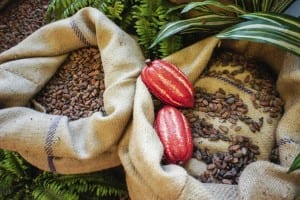 The true origin of cacao is largely unknown; however, a recent archaeological study provided evidence that Ecuador may have been the original home of the cacao tree.
The true origin of cacao is largely unknown; however, a recent archaeological study provided evidence that Ecuador may have been the original home of the cacao tree.
An archaeologist named Francisco Valdez unearthed ceramic pottery dating back to 3,300 BC that contained microscopic traces of cacao, suggesting the beans were cultivated and consumed in the area more than 5,000 years ago.
Many believe Ecuador was largely responsible for introducing chocolate to the West – while gold and silver were taken from most Spanish colonies in South America, Ecuador was exploited for its abundant supply of cacao.
Exporting cacao
Ecuador produces only 4% of the entire world’s cacao, however, the country is the largest producer of fine aroma cacao, providing over 70% of the world’s supply. Given the fact that cacao is a huge part of Ecuador’s history, it comes as no surprise that it was declared “Product Symbol of Ecuador” in 2005 by the country’s Ministry of Agriculture.
Though Ecuador produces some of the best cacao in the world, due to the limited processing capacity, a significant percent of the cacao beans are exported as raw material overseas (mostly in Europe). The beans are then processed in chocolate factories, and later on sold at gourmet chocolate shops throughout the world.
There are various types of cacao cultivated in Ecuador, but the most sought-after variety is known as “Nacional,” a type with distinctive aromas and the highest quality of grains.
The cacao beans’ fine aroma and superior quality makes it ideal for producing gourmet dark chocolate or vegan chocolate, as milk products are no longer required to balance the rich taste.
Ecuador’s Organic Coffee
Though Ecuador isn’t known as a large coffee-producing country, it is one of the very few that cultivates and exports Arabica and Robusta coffee beans – two popular varieties used to make coffee consumed around the world.
Because of Ecuador’s rich and biologically diverse landscape, various ecosystems within the country allow a wide range of coffee cultures to thrive.
History of coffee in Ecuador
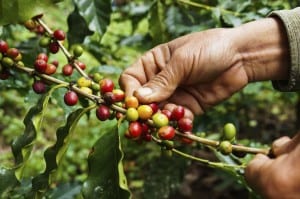 When coffee grains were introduced in Ecuador during the mid-1800s, it eventually became one of the country’s top export products for a very long time to come. The Arabica variety was mostly grown in coastal Manabi Province, in the mountainous province of Loja, and along the western foothills of the Andes mountains. Robusta varieties were cultivated in Guayas and the northern region.
When coffee grains were introduced in Ecuador during the mid-1800s, it eventually became one of the country’s top export products for a very long time to come. The Arabica variety was mostly grown in coastal Manabi Province, in the mountainous province of Loja, and along the western foothills of the Andes mountains. Robusta varieties were cultivated in Guayas and the northern region.
As soon as Ecuador opened for foreign trade and commerce, many small plantations sprouted throughout the nation, boosting Ecuador’s economic growth.
Ecuador’s coffee industry significantly declined during 1903, but it recovered two years later, when the country started exporting coffee beans to several European countries.
Ecuador currently produces around 575,000 bags (60kg per bag) annually. The country exports their coffee to more than 50 countries, which include the United States, France, Germany, Spain, Japan, Colombia, Italy, Canada, Argentina, and Holland.
Coffee production
Coffee is grown in 10 of the 24 provinces in Ecuador: El Oro, Manabí, Loja, Guayas, Zamora Chinchipe, Pichincha, Orellana, Sucumbíos, Galapagos, and Napo.
Traditional methods are still used today to produce about 80% of coffee in Ecuador. Beans are handpicked, and farmers usually avoid using fertilizer for the soil. Instead of the modern irrigation systems used in most farms today, many coffee farms rely on rainfall to water the crops. Farms that use traditional methods produce about 300kg of coffee per hectare, while plantations that use technical or semi-technical methods yield about 700kg per hectare.

